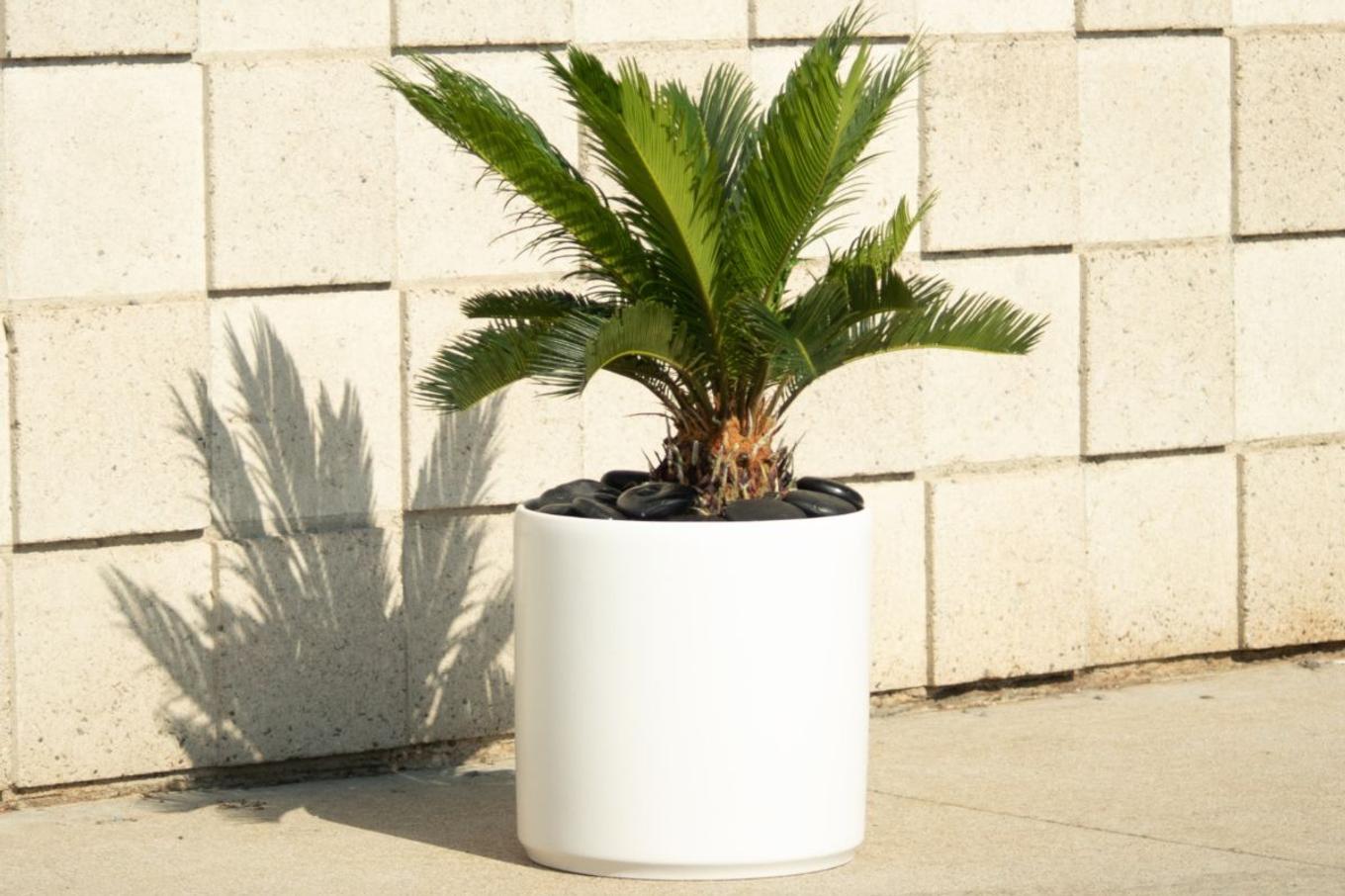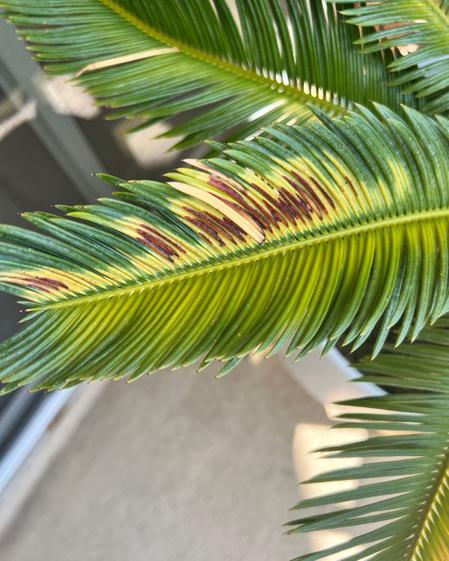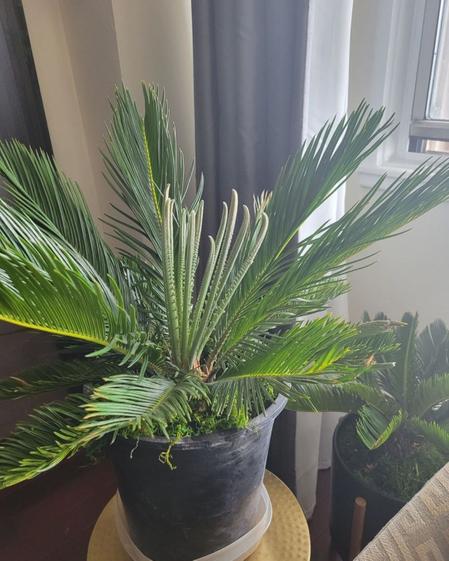Sago Palm Care Guide

Despite its name, the Sago Palm isn’t actually a palm at all—it’s a cycad, an ancient plant species that’s been around since the time of the dinosaurs. With its stiff, glossy fronds and sculptural, symmetrical form, the Sago Palm brings a bold, prehistoric elegance to indoor and outdoor spaces alike. It’s slow-growing, long-lived, and surprisingly easy to care for—just don’t be fooled by its tough exterior: it likes a little attention.
Simple Care Instructions for the Sago Palm
Light Requirements
Sago Palms thrive in bright, indirect light but can also tolerate some direct sun—especially morning sun. If indoors, place it near a bright window with filtered light. Outdoors, give it a partially shaded spot where it gets dappled sun for a few hours a day.
Avoid deep shade indoors, which can lead to weak or sparse growth.
Watering Needs
Err on the side of underwatering with the Sago Palm, letting the top 2–3 inches of soil dry out before watering. Sago Palms are extremely sensitive to overwatering and are prone to root rot if left sitting in soggy soil. During warmer months, water every 1–2 weeks depending on your environment. In cooler months, reduce watering frequency significantly—these plants are drought-tolerant and prefer dry conditions to wet ones.
Humidity and Temperature
Sago Palms prefer moderate humidity but are very adaptable. Average indoor humidity is usually fine, but if your air is especially dry, occasional misting can help keep the fronds healthy.
They enjoy warm temperatures between 65–85°F (18–29°C). Keep them away from cold drafts, air conditioners, and heaters. Sago Palms cannot tolerate frost—if placed outdoors in cooler climates, bring them inside before temperatures drop below 50°F (10°C).
Soil and Repotting
Use a well-draining, sandy potting mix, similar to what you’d use for cacti or palms. Drainage is key—Sago Palms despise soggy roots. A terra cotta pot can help wick away excess moisture.
Sagos are very slow growers and don’t need frequent repotting. Repot every 3–4 years, or when you notice roots emerging from the bottom of the pot.
Common Problems and Troubleshooting Tips
Yellowing Leaves – Overwatering or Poor Drainage
Symptoms: Older fronds turn yellow and wilt.
Cause: Overwatering or soil that retains too much moisture.
Solution: Allow soil to dry out completely between waterings. Check that your pot has adequate drainage and consider switching to a grittier mix.
Yellow/Brown Leaves – Fungus
Symptoms: Leaves turning yellow and/or brown, appearing burnt.
Cause: A typical fungus such as Anthracnose.
Solution: Remove the affected leaves and treat with fungicide or neem oil.
Brown Leaf Tips – Dry Air or Underwatering
Symptoms: Crisp, brown edges or tips on fronds.
Cause: Low humidity or inconsistent watering.
Solution: Mist occasionally and maintain a more regular watering schedule without overdoing it.
Leaf Spot or Mold – Poor Air Circulation
Symptoms: Black or brown spotting on fronds.
Cause: Excess humidity or stagnant air.
Solution: Improve ventilation, avoid misting late in the day, and remove affected leaves.
No New Growth – Lack of Light or Nutrients
Symptoms: Plant appears stagnant, with no new fronds emerging for months.
Cause: Not enough light or depleted soil.
Solution: Move to a brighter location and feed with a slow-release fertilizer in spring/summer.
Pests – Scale or Mealybugs
Symptoms: Sticky residue, fuzzy white patches, or hard brown bumps on stems and fronds.
Cause: Common indoor pests.
Solution: Wipe leaves with a damp cloth and treat with neem oil or insecticidal soap weekly until pests clear.

Fungus on Sago Palms can be common.

Potential nutrient deficiency.

New growth on the Sago Palm!
Seasonal Care Tips
Spring and summer are the Sago Palm’s active growing seasons. If you're going to fertilize, do so sparingly—once at the start of spring and again mid-summer with a balanced, slow-release fertilizer.
In fall and winter, your Sago will rest. Water sparingly and avoid feeding. Keep it in a bright, warm space away from cold drafts, and it will easily ride out the off-season.
Important note: All parts of the Sago Palm are highly toxic to pets and humans if ingested. Keep out of reach of curious children or animals.
